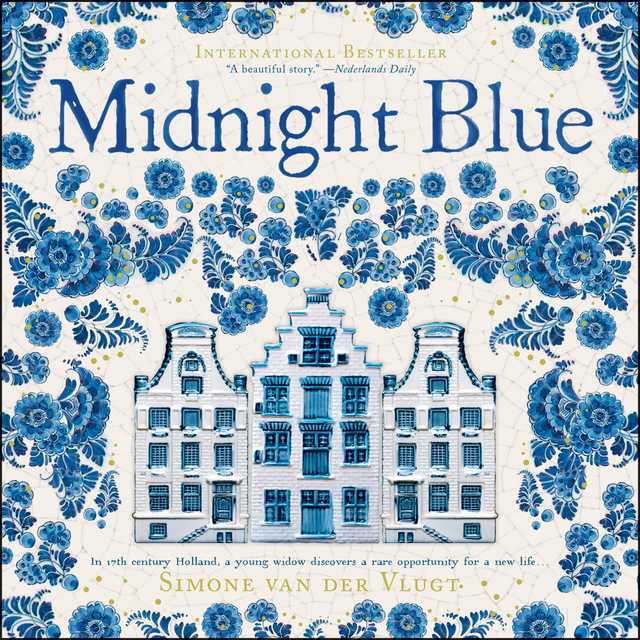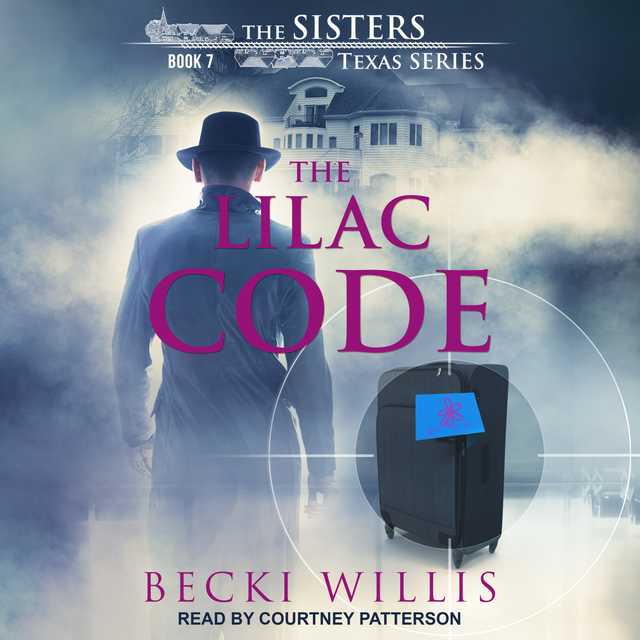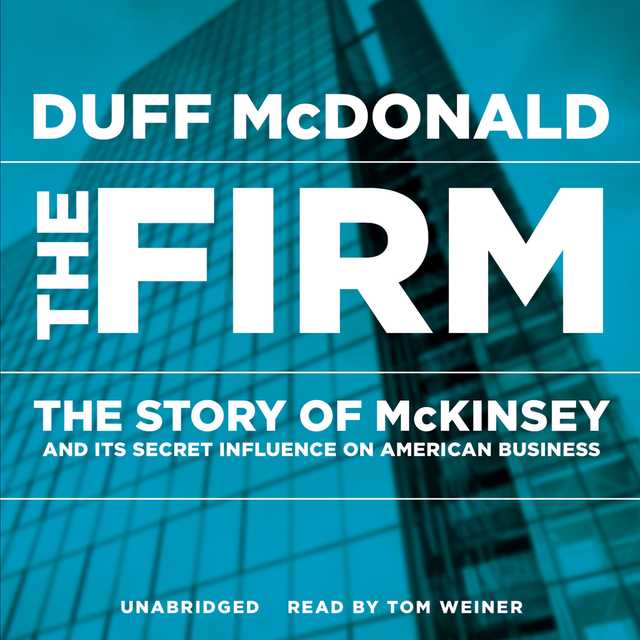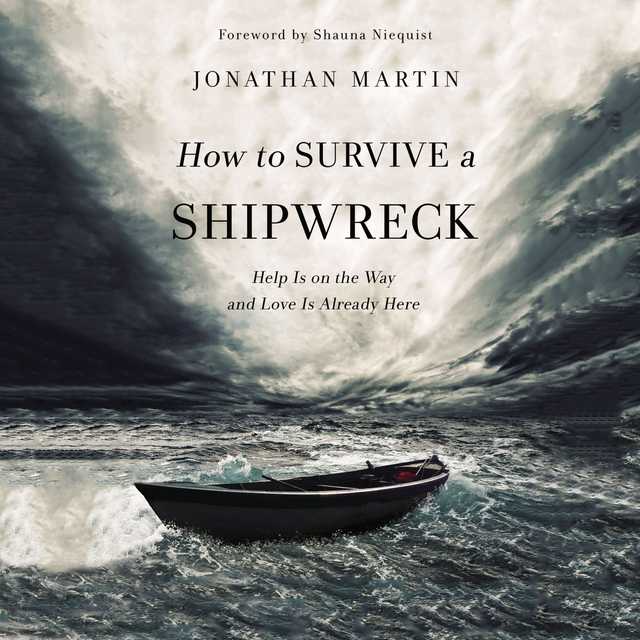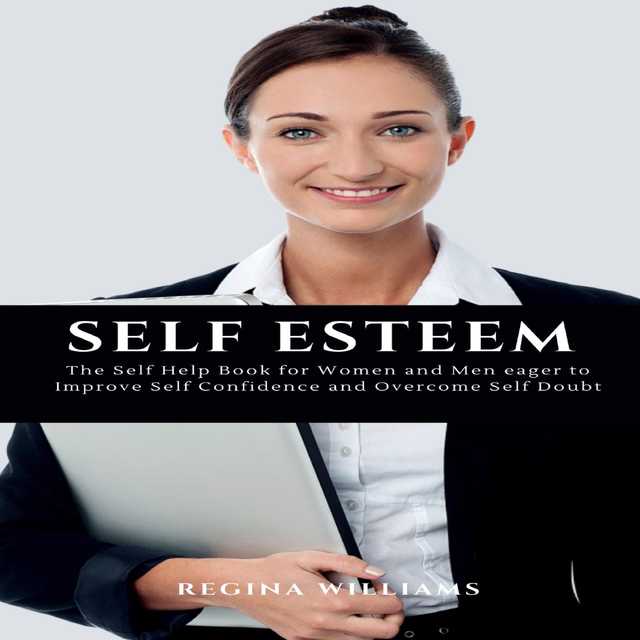Midnight Blue Audiobook Summary
From Simone Van Der Vlugt comes her European bestselling novel of a young woman’s rise as a painter in Holland’s Golden Age–perfect for readers of The Miniaturist, Tulip Fever, and Girl with a Pearl Earring.
Amsterdam 1654: against the backdrop of Holland’s Golden Age, a dangerous secret threatens to destroy a young widow’s new life.
Following the sudden death of her husband, twenty-five-year old Catrin leaves her small village and takes a job as a housekeeper to the successful Van Nulandt merchant family. Amsterdam is a city at the peak of its powers: science and art are flourishing in the Golden Age and Dutch ships bring back exotic riches from the Far East. Madam Van Nulandt passes her time taking expensive painting lessons from a local master, Rembrandt van Rigin, and when Catrin takes up a brush to finish some of her mistress’s work, Rembrandt realizes the maid has genuine talent, and encourages her to continue.
When a figure from her past threatens her new life, Catrin flees to the smaller city of Delft. There, her gift as a painter earns her a chance to earn a living painting pottery at a local workshop. Slowly, the workshop begins to develop a new type of pottery to rival fancy blue-on-white imported Chinese porcelain–and the graceful and coveted Delft Blue designs she creates help revolutionize the industry. But when tragedy strikes, Catrin must decide whether to defend her newfound independence, or return to the village that she’d fled.
Other Top Audiobooks
Midnight Blue Audiobook Narrator
Imogen Church is the narrator of Midnight Blue audiobook that was written by Simone van der Vlugt
Simone van der Vlugt is an acclaimed Dutch novelist, whose books have sold more than two million copies. She lives with her husband and two children in Alkmaar. Midnight Blue is her first novel to be published in the United States.
About the Author(s) of Midnight Blue
Simone van der Vlugt is the author of Midnight Blue
More From the Same
- Publisher : HarperAudio
- Abraham
- American Gods [TV Tie-In]
- Dead Ringer
- House of Sand and Fog
- Prey
Midnight Blue Full Details
| Narrator | Imogen Church |
| Length | 8 hours 49 minutes |
| Author | Simone van der Vlugt |
| Category | |
| Publisher | HarperAudio |
| Release date | June 26, 2018 |
| ISBN | 9780062880673 |
Additional info
The publisher of the Midnight Blue is HarperAudio. The imprint is HarperAudio. It is supplied by HarperAudio. The ISBN-13 is 9780062880673.
Global Availability
This book is only available in the United States.
Goodreads Reviews
Always
September 21, 2019
Catrijn is a Dutch farm girl who has always wanted more than to stay on a farm forever, so when her husband dies she sells the property he leaves her and goes to the city. While she's there working as a maid one of her old farm hands finds her and threatens her with a secret from her past so she flees further away and finds a job painting pottery. I really enjoyed this book and I loved the writing. It's translated but the writing didn't seem to lose any dept or sound awkward at all. I loved Catrijn and I really am glad that the book ended the way it did. It's a good pleasure read, it's well written and kept me engaged through out. The main character meeting Rembrandt and Vermeer was a little questionable though and I'm not sure about the historical accuracy but I'm pretty sure the historical accuracy isn't the point of the book so.
Annette
March 20, 2020
This story is set during the 17th century Netherlands, period known as the Dutch Golden Age, and during that time art was among the most acclaimed in the world. The story briefly weaves in such artists as Rembrandt and Vermeer, focusing majorly on the Dutch Porcelain. It starts in 1654 in a small village of De Rijp. The fictional heroine, Catrin, after the death of her husband, moves out of her village, which is unheard of. She follows her dream to be in a city. She sells all her belongings and the only thing she takes with her is the talent for painting. She dreams of having her own business of painting pottery.In Amsterdam, Catrin takes a job as a housekeeper to the successful Van Nulandt merchant family. As a merchant he trades with China, bringing exquisite porcelain. No one in Europe knows how to make it. And what catches Catrin’s eye are the figures and landscape painted on big vases. But when the past catches up with her, she moves to Delft with recommendations from Van Nulandt’s. In Delft, she gets her dream job as pottery painter. Van Nulandt’s father started working with majolica – “rough earthenware with an ornamental glaze that originated in Italy.” His oldest son who took over the business shifted to faience – “a finer type of earthenware,” something of porcelain, but not so delicate. Catrin is introduced to the pottery when it is already in decline. An idea comes to her mind to introduce new motifs, not just the flowers that have been painted thousands of times already. She convinces her boss to try something new. She draws first Chinese figures and landscape, which later are copied on thousands of pottery. A revival starts, giving birth to Dutch Porcelain, later it was named Delftware or Delft pottery, also known as Delft Blue.The story also intertwines the Delft Explosion of 1654, gunpowder explosion caused by an inspector with a lantern. As well as 1655 plague; as with any previous epidemic that ravaged Europe, this one is no exception, leaving thousands dead.There is one part of the story, something in Catrin’s past which follows her throughout the story. I didn’t care for this part and I think the story would have been even stronger without it. But at the same time, I can see how this could be a great hook for others. Overall, it is an interesting story, reviving the Dutch Porcelain in history.@FB/BestHistoricalFiction@https://bestinhistoricalfiction.blogs...
Vivian
May 27, 2016
3,5 sterren. Mooi boek, maar had er helaas meer van verwacht: het is zeker niet slecht geschreven of stom, maar ik vond het gewoon niet zo bijzonder. Duurde lang voor het op gang kwam en de schrijfstijl bleef erg aan de oppervlakte. Uitgebreide recensie: http://thebookreview.nl/recensies/rom...
Dorina
May 19, 2019
"Albastrul din miez de noapte" e o carte despre condiția femeii ca artist, în secolul al XVII-lea olandez. E un roman care te duce cu gândul la o pictură, dar, până la urmă, se dovedește că că albastrul din miez de noapte nu a fost decât un amestec de vopsele folosit pentru disimularea unei crime.Un roman de ficțiune istorică agreabil, pe care îl recomand iubitorilor genului și pasionaților de artă olandeză. Nu te aștepta, totuși, la prea multă acuratețe istorică, e, până la urmă o operă de ficțiune.Am scris mai multe pe blog https://dorinadanila.com/2019/05/16/r...
Helen
May 02, 2017
Midnight Blue is a novel set in the Netherlands in the 17th century and written by Dutch author Simone van der Vlugt. Originally published in Dutch, this edition from HarperCollins features an English translation by Jenny Watson.As the novel opens in 1654, we meet Catrin, a young woman who lives in the village of De Rijp and who has recently been widowed. Hoping to make a new start, Catrin says goodbye to her family and sets out on the long journey to Amsterdam, where she has been offered work. Arriving in the city, she takes up her new position as housekeeper to the merchant Adriaan van Nulandt.As she settles into her job and gets to know the family, an attraction forms between Catrin and Adriaan’s younger brother, the charismatic and adventurous Matthias. She also watches with envy and fascination as Adriaan’s wife, Brigitta, is encouraged to pursue her passion for painting, something for which Catrin also has a talent. It’s not long, however, before a face Catrin thought she had left behind reappears, threatening to tear apart the new life she has built for herself – and so she decides it’s time to move on again, this time to Delft and the home of another Van Nulandt brother, Evert. Evert owns a pottery workshop and it is here that Catrin finds an opportunity to put her artistic abilities to good use at last…Although Catrin’s personal story is fictional, the world in which Simone van der Vlugt places her is grounded in historical fact. My knowledge of Dutch history is very limited, picked up mainly from the few other novels I’ve read set in the country, and it’s always good to have the opportunity to learn something new! The period covered by the novel includes such notable events as the Delft Explosion of 1654 and an outbreak of the plague. Life in Catrin’s home village of De Rijp and the cities of Amsterdam and Delft is vividly described, and as Catrin spends so much time travelling from one place to another, we are also given descriptions of the scenery seen from the canals and rivers which link her various destinations.The time during which the novel is set – known as the Dutch Golden Age – saw art, science, trade and industry flourishing in the Netherlands, including the pottery industry which forms such an important part of the story. You can expect to learn a lot about mixing chemicals, painting designs, glazing pots and firing them in kilns…and you’ll come away from the novel with an admiration for Delft Blue, the blue and white pottery produced at Evert’s workshop. Several historical figures from the art world are incorporated into the story too, although I found it difficult to believe that Catrin would have come into contact with so many famous artists of the period – Rembrandt, Vermeer, Nicolaes Maes and Carel Fabritius all make an appearance and all have words of advice or encouragement for Catrin.Catrin herself is an interesting character. The novel is written in first person present tense, which is not my favourite for historical fiction, but it does mean that we get to know our narrator quite well. Even so, we don’t know everything about her immediately; Catrin keeps some parts of her past hidden to be revealed later on – and when the past does begin to catch up with her, this introduces a thriller element to the novel which adds another layer of interest. I was occasionally pulled out of the 17th century by the use of a word or phrase which felt too modern, but it’s difficult to say how much of this was due to the translation and how much to the original text.Midnight Blue is a light and entertaining novel which I would recommend to readers who have enjoyed other books with Dutch settings such as Girl with a Pearl Earring or The Miniaturist.
Gaele
July 05, 2018
3.5 stars, rounded Following the tale of Catrin, we have a glimpse into the times: married at 17 and widowed by 25, she’s left her small village and taken a post as housekeeper with a successful merchant family, the wife spending her time in painting lessons from the master, Rembrandt. One of Catrin’s joys is the paintings and art she’s seeing for the first time, and with encouragement from her mistress’ teacher, she perhaps has a new and more creative option. But her past is never far behind, and one who knows her secret has discovered her whereabouts, forcing Catrin to flee, again, this time to Delft, a place soon to be known for its unique blue and white pottery – an attempt to rival the fine Chinese porcelains so in demand by the masses. In Delft, a new opportunity arises as her gift with a brush provide her a living, and she is soon consumed with her new life and new-found independence as a pottery painter, leaving the past and its scandals behind her. Much of the history of both import and trade, as well as insights into art, life and the history of Delft pottery are revealed, all as part of Catrin’s story. Of course, the past arrives again to threaten her new life, and decisions must be made. Overall, I enjoyed the history presented here, even as I had some issues with the language attributed to Catrin and her contemporaries. It was often far too modern, and her own behaviors were very forward for the time and her position – she was a far more ‘modern’ figure than one would or should expect, even if she was able to make a living from her own talent. While the writing, in translation, didn’t feel stilted or particularly off, the mix of Catrin’s present with the secrets and scandal of her past, and her very decidedly modern feel just didn’t blend with the historic information or feel that I wished were more prevalent as I read. But, it was interesting and engaging for the history and setting, giving a sense, if not wholly accurate, of the time and place for one woman as she lived her life. I received an eArc copy of the title from the publisher via Edelweiss for purpose of honest review. I was not compensated for this review: all conclusions are my own responsibility. Review first appeared at I am, Indeed
Liesl
January 08, 2020
It's a story of a woman in 17th century Netherlands and the start of the Delft porcelain. I really liked the story, and was fascinated by the history of Delft.
5 o’clock bookclub
September 06, 2021
Această poveste este situată în secolul al XVII-lea în Olanda, perioadă cunoscută sub numele de Epoca de Aur olandeză, iar în acea perioadă arta a fost printre cele mai apreciate din lume. Povestea îi pomenește scurt și pe marii artiști precum Rembrandt și Vermeer, dar se concentrează - în principal - pe arta porțelanul olandez.După moartea soțului ei, Catrjin se mută din satul ei, De Rijp, un lucru nemaiauzit, mai ales în 1654. Ea își urmărește visul de a locui într-un mare oraș unde să poată trăi din pictură, marea ei pasiune. Își vinde toate bunurile și singurul lucru pe care îl ia cu ea este talentul căci visează să aibă propria afacere care să-i asigure traiul zilnic.În Amsterdam, Catrjin ocupă un post de menajeră la familia lui Adrian Van Nulandt, o familie bogată de comercianți. Ca negustori, ei fac comerț cu China, aducând porțelan rafinat pe care nimeni din Europa nu știe cum să-l producă. Ceea ce atrage atenția lui Catrjin sunt figurile și peisajele pictate pe vazele mari, de un alb pur. Ghinionul o urmărește și în Amsterdam, iar trecutul nu o lasă să trăiască. Aici Catrjin se îndragostește de Matthias, fratele lui Adrian, și cel care se ocupă de procurarea produselor pe care Adrian le comercializează. Matthias iubește viața, iubește marea și iubește aventura. Nu este genul de bărbat care să poată sta într-un singur loc.Când trecutul o prinde din urmă, ea fuge din Amsterdam în Delft sperând să poată ține ascunse păcatele trecutului. În Delft, ea obține cu ușurință o slujbă ca pictor de ceramică datorită talentului ei. Familia Van Nulandt a început să lucreze cu majolica - „o faianță aspră, cu o glazură ornamentală, originară din Italia”. Fiul cel mare și cel care a preluat afacerea la moartea părintelui său - Evert - a început să lucreze cu faianță - „un tip mai fin de porțelan, dar nu atât de delicat". Catrjin este introdusă în arta ceramicii, iar spiritul ei de observație ține afacerea pe linia de plutire. Are curajul de a vorbi, chiar dacă este femeie (ciudat, nu-i așa, să ai curajul să vorbești în fața bărbaților?) și propune idei care se dovedesc a fi inedite și care au un success imediat. Ea își convinge șeful să încerce ceva nou. Astfel, ia naștere epoca porțelanului olandez, care ulterior a fost numit Delftware sau ceramică din Delft, cunoscută și sub numele de Delft Blue.Viața personală a lui Catrjin nu a fost una ușoară, dar ea se dovedește a fi o femeie extrem de puternică ce poate să răzbată în viață în ciuda greutăților întâlnite. Dacă fericirea îi este destinată, asta rămâne de văzut.În poveste regăsim și alte evenimente istorice care au avut loc în epoca respectivă ca explozia din Delft din 1654 sau ciuma din 1655. Există o parte a poveștii, ceva din trecutul lui Catrjin care o urmărește pe tot parcursul poveștii. Nu mi-a pasat de această parte, dar cred că fără asta povestea nu ar fi fost la fel. Este un roman în care avem parte de dragoste, prietenie, trădare, teamă, crime, chiar și de o pandemie :).
Hannie
April 25, 2016
Nachtblauw van Simone van der VlugtNa de lege stad is dit voor mij de tweede keer dat ik een historische roman van Simone van der Vlugt lees en weer ben ik net als de vorige keer daardoor helemaal in de ban. Wat schrijft zij toch geweldig. Met Nachtblauw is het net of dat ik me echt in Delft bevind en bekende schilders zoals Rembrandt uit vroegere tijden ontmoet. De manier hoe dat het Delfts blauw ontstaat, lijkt net of dat het allemaal echt waar is en tijdens het lezen zie je alles zo gebeuren. Het leven van Catrijn maakt hier een meeslepend liefdesverhaal omheen in een zeer drukke en woelige tijd. Van mij mag er weer snel een volgende historische roman uitkomen. Gelukkig heb ik nog 2 stuks van haar niet gelezen en dat zijn Rode sneeuw in december en Jacoba, dochter van Holland.Nachtblauw krijgt van mij 5 sterren.
Andreea Zelenyak
July 01, 2018
Usually this is not my cup of tea, but, I really enjoyed listening to this one as an audiobook. I couldn’t stop listening....even though it’s the middle of the night and tomorrow I’ll have to go to work. A masterpiece! 5 golden stars
Anagard
January 16, 2023
Zanimljiva knjiga, dobra za opuštanje. Dijelom zasnovana na istinitim istorijskim činjenicama koje dosad možda niste znali. Ako vas zanima umjetnost, ova knjiga bi vam mogla biti interesantna. "Ako živiš u strahu, živiš samo pola života."
Ana
August 28, 2017
En un principio me había parecido muy semejante a “La joven de la perla” de Tracy Chevalier, libro y autora que me encantan. Y, aunque el tema de los pintores se trata de manera superficial, fue agradable reencontrar a Vermeer, esta vez en sus inicios.La ambientación y el marco histórico están muy cuidados, a pesar de que ciertos aspectos del comportamiento de la protagonista no acaben de encuadrarse totalmente en su época. Más parece estar en la nuestra que en la del siglo XVII. Catrijn se mueve y actúa con una libertad que no creo que tuviesen muchas mujeres en aquellos años.El utilizar la primera persona hace que la autora nos vaya explicando los hechos según la protagonista quiere, con lo que al principio no contamos con todos los datos y vamos descubriendo la verdadera historia conforme discurre el libro. Incluso se puede pensar que nos cuenta lo que ella quiere que pensemos de su forma de guiarse, como si pretendiese que nos pusiésemos de su parte y no la juzgásemos duramente. Porque si pensamos lo que hace fríamente tal vez, en algún momento, no nos pusiésemos de su parte. El resto de los personajes parecen meros medios para conseguir lo que quiere como comenta Jacob en un par de ocasiones. Tal vez este sea el único personaje que ve claramente el trasfondo o tal vez sea impresión mía. Ahí estaría el problema de la primera persona, pues no sabemos si lo que vemos es la verdad o la verdad que ella quiere mostrarnos.Lo más interesante, a mi entender, es la visión que nos da sobre la vida en aquella época con sus momentos buenos y malos y, sobre todo, el auge de la manufactura de la llamada “porcelana holandesa”. Incluso la autora reconoce que la historia surgió de una propuesta de su editora para que escribiese sobre este asunto.
Most Popular Audiobooks
Frequently asked questions
Listening to audiobooks not only easy, it is also very convenient. You can listen to audiobooks on almost every device. From your laptop to your smart phone or even a smart speaker like Apple HomePod or even Alexa. Here’s how you can get started listening to audiobooks.
- 1. Download your favorite audiobook app such as Speechify.
- 2. Sign up for an account.
- 3. Browse the library for the best audiobooks and select the first one for free
- 4. Download the audiobook file to your device
- 5. Open the Speechify audiobook app and select the audiobook you want to listen to.
- 6. Adjust the playback speed and other settings to your preference.
- 7. Press play and enjoy!
While you can listen to the bestsellers on almost any device, and preferences may vary, generally smart phones are offer the most convenience factor. You could be working out, grocery shopping, or even watching your dog in the dog park on a Saturday morning.
However, most audiobook apps work across multiple devices so you can pick up that riveting new Stephen King book you started at the dog park, back on your laptop when you get back home.
Speechify is one of the best apps for audiobooks. The pricing structure is the most competitive in the market and the app is easy to use. It features the best sellers and award winning authors. Listen to your favorite books or discover new ones and listen to real voice actors read to you. Getting started is easy, the first book is free.
Research showcasing the brain health benefits of reading on a regular basis is wide-ranging and undeniable. However, research comparing the benefits of reading vs listening is much more sparse. According to professor of psychology and author Dr. Kristen Willeumier, though, there is good reason to believe that the reading experience provided by audiobooks offers many of the same brain benefits as reading a physical book.
Audiobooks are recordings of books that are read aloud by a professional voice actor. The recordings are typically available for purchase and download in digital formats such as MP3, WMA, or AAC. They can also be streamed from online services like Speechify, Audible, AppleBooks, or Spotify.
You simply download the app onto your smart phone, create your account, and in Speechify, you can choose your first book, from our vast library of best-sellers and classics, to read for free.
Audiobooks, like real books can add up over time. Here’s where you can listen to audiobooks for free. Speechify let’s you read your first best seller for free. Apart from that, we have a vast selection of free audiobooks that you can enjoy. Get the same rich experience no matter if the book was free or not.
It depends. Yes, there are free audiobooks and paid audiobooks. Speechify offers a blend of both!
It varies. The easiest way depends on a few things. The app and service you use, which device, and platform. Speechify is the easiest way to listen to audiobooks. Downloading the app is quick. It is not a large app and does not eat up space on your iPhone or Android device.
Listening to audiobooks on your smart phone, with Speechify, is the easiest way to listen to audiobooks.

